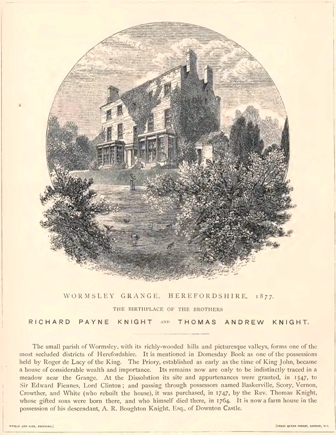TCTOP – Herefordshire publications
Histories of Herefordshire
The orchards of Herefordshire have long been the subject of study by botanists, fruit growers, historians and antiquarians.
In carrying out their research, the volunteers have relied on some important historical books about Herefordshire orchards. Described as ‘antiquarian’ books, some are over 200 years old, and original copies are usually kept in specialist research libraries.
We discovered that these days many are available to download for free from a range of websites. Here are some of the books we used.
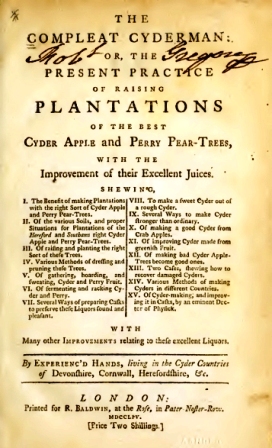
The compleat cyderman: or, the present practice of raising plantations of the best Cyder Apple and Perry Pear-Trees
William Ellis (1754)
In fifteen chapters, Ellis covers all aspects from planting your orchard, picking and pressing the fruits and fermenting the cider.
Ellis describes how to ‘make a sweet Cyder out of a rough Cyder’ and ‘Several Ways to make Cyder stronger than ordinary’.
In addition, he includes ‘many other Improvements… by Experienc’d Hands, living in the Cyder Countries of Devonshire, Cornwall, Herefordshire, &c.’
William Ellis was born in about 1700, received an ordinary education, and began life as a plain farmer. For nearly fifty years he farmed at Little Gaddesden, Hertfordshire, but he made no pretence to scientific agriculture.
Instead, he based his books on farming techniques and care of animals on practical experience. He wrote that ‘I always considered experience as the only touchstone of truth.’
You can download a digitised copy of The Compleat Cyderman from the Biodiversity Heritage Library.
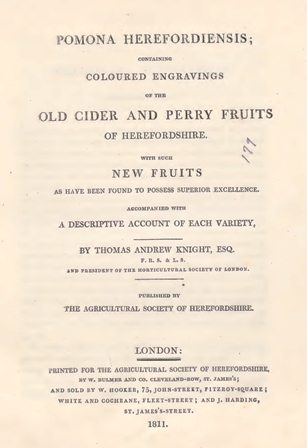
Pomona Herefordiensis
Thomas Andrew Knight (1811)
Thomas Knight’s detailed book contains descriptions and 30 coloured engravings of the old Cider and Perry Fruits of Herefordshire.
The Agricultural Society of Herefordshire originally printed the book in 10 parts and it is the earliest of the dedicated historical books about Herefordshire orchards
Individuals bought the parts and paid to have them bound into a single book that matched their library collections. This means that some volumes will vary in content and appearance depending on the instructions of the original collector.

Where can I see it?
You can see printed copies of the book at the Museum of Cider in Hereford but do call ahead before you visit!
You can download a digitised version of this volume from the Biodiversity Heritage Library

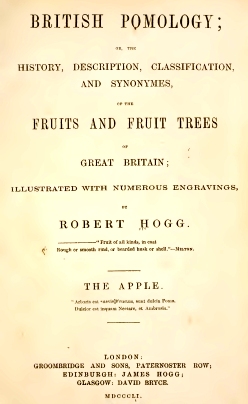
British Pomology; Or, The History, Description, Classification, and Synonymes, of the Fruits and Fruit Trees of Great Britain. Vol.1, The Apple
Robert Hogg (1851)
Robert Hogg (1818–1897) was a well-known Scottish nurseryman and botanist. He researched and wrote British Pomology which is still considered essential reading today.
Hogg exchanged letters with a wide network of growers and scholars and he travelled widely to carry out his research.
He wrote extensively about fruit culture and plant identification and co-edited The Florist and Pomologist: A Pictorial Monthly Magazine.
Where can I see it?
You can download a digitised copy of his book from the Biodiversity Heritage Library.
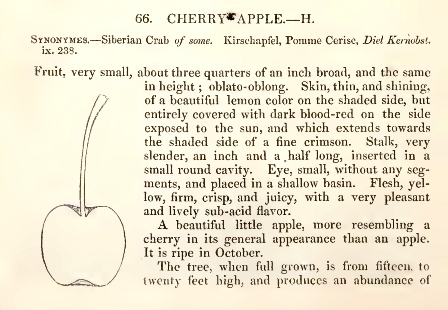
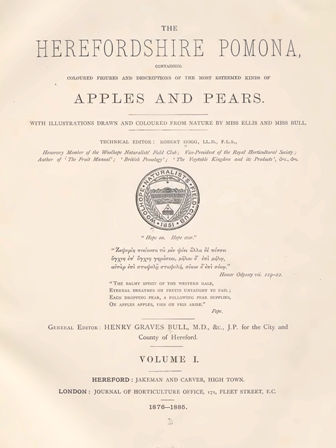
The Herefordshire Pomona, volumes 1-2
Robert Hogg and Henry Graves Bull (1876-1885), with illustrations by Edith E. Bull
The Woolhope Naturalists’ Field Club regularly invited Robert Hogg to judge the annual apple show and identify fruit varieties. His writing partner, Henry Graves Bull was a Herefordshire physician, a keen naturalist and a member of the Woolhope. Edith Bull, the book’s illustrator, was very likely Henry’s daughter.
in 1885, Hogg and Bull’s printers published the Pomona in 7 unbound parts and also issued 600 copies as a two-volume set.
Researchers find that these historical books about Herefordshire orchards are still valuable sources of information today.
You can read further information about the publication of the Pomona on the blog page of the Biodiversity Heritage Library.
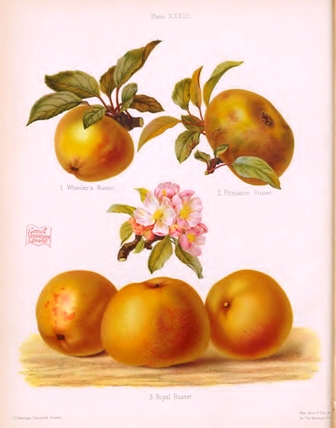
Where can I see it?
You can see printed copies of the book at the Museum of Cider in Hereford but do call ahead before you visit!
You can download digitised copies of both volumes from the Biodiversity Heritage Library website
